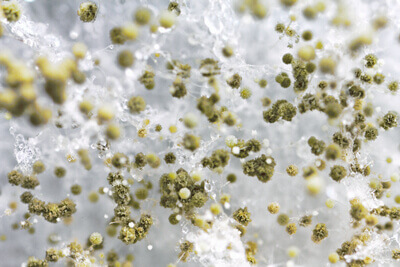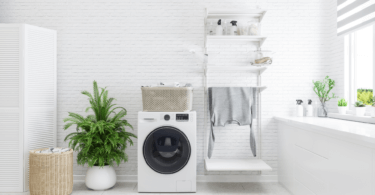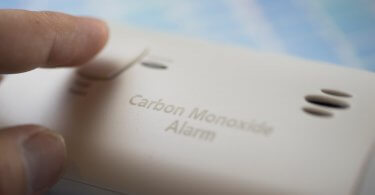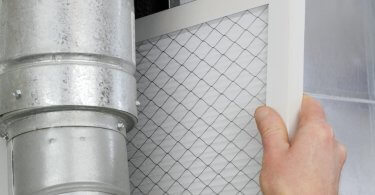
You must have come across some icky, smelly, and destructive mold at least once. Luckily, there are ways you can get rid of mold and kill it.
In this article, we’ll discuss a non-toxic way to kill mold – temperature change. So, if you want to know more about mold problems and how to resolve them with heat or cold treatment, read on.
What Causes Mold Growth?
The first step towards removing and killing mold is to understand what caused it in the first place. Unsurprisingly, mold can happily thrive inside houses. Here’s why:
- Temperature – Mold survive at about the same temperature as human beings, which is why they grow easily inside households. Most types require a minimum of 70° Fahrenheit (20° Celsius) and a maximum of 120° Fahrenheit (48° Celsius). So anywhere warm is at risk of mold growth because warm air absorbs moisture much better than cold air.
- Moisture – Fungi use water to grow and quickly expand, and unfortunately, houses are often full of humid air. From showers and leaking pipes to laundry rooms and wet basements, the sources of moisture are endless. Moreover, living in humid climates makes things even worse. Anywhere above 75% humidity is ideal for mold growth.
- Oxygen – Disgusting as they look, mold are living beings and need oxygen to grow, reproduce, and survive. Many types of mold can survive even in pretty low amounts of oxygen.
- Food Source – Annoyingly enough, mold and mildew can use almost anything as a food source. They feed not just on food that we eat, but also organic matter like wallpapers, drywall, wood, etc.
Using Heat to Kill Mold
Treating mold with heat is effective because, yes, high temperatures does kill mold. It’s often considered even better than chemical processes to remove and kill mold – nobody likes their house and its stuff stinking of strong chemicals.
Here are a few ways you can use heat to get rid of mold.
Dryer
Let’s start with a small-scale mold killing spree. If you have mold or mildew on any fabric, a stuffed toy, or similar things, you can throw it in the dryer to get rid of the fungus.
Set your dryer on its highest heat setting (if your fabric can tolerate it) and give it a good 20 to 25 minutes. After this, wash your fabrics with a disinfecting detergent to get rid of all the dead mold.
Bake It
Your oven is capable of heating things at very high temperatures, and you can use this to kill mold on surfaces like wood, metal, and glass.
So, begin with setting your oven on a low – medium heat and place the moldy things on a baking tray inside it for 20 minutes. The heat will dry up the mold and kill it.
Heaters and Hair Dryers
Dealing with mold on larger surfaces like walls is more tricky, as it’s harder to heat such places enough to kill fungi. However, your central heating system and portable heater, in particular, can prove useful to an extent.
Heating your house with a central heater will lower the relative humidity inside, reducing the chances of mold growth. However, a more targeted approach is using a portable heater or even a hair dryer to kill mold.
Place your portable heater on its highest setting facing the wall or object with mold. Let the mold dry, after which you can clean it off.
Read next: The Best Bathroom Heater in the House
How to Remove Mold With Cold
Like us humans, many types of mold can’t thrive in extremely low temperatures. However, cold environments don’t necessarily kill them. Instead, it will effectively stop the mold from multiplying or prevent the mold spores from germinating.
Once this happens, you should thoroughly clean the objects’ surface to get rid of the gunk. This is because a low temperature puts mold in a dormant state. Once conditions are suitable, it will start growing again, which is why it’s important to disinfect the objects.
Freezing moldy stuff in a freezer is one way of treating mold with cold. So, follow the steps listed below to use this method:
- Wear a mask and disposable gloves to grab the mold-infested objects (mold can cause allergic reactions, so always take such precautions).
- Place them outside in a well ventilated and open area. The wind will help disperse some of the spores and ensure they don’t spread.
- After some time, place these objects in a resealable plastic bag. Next, keep the plastic bag into the freezer for an entire day or so. Also, make sure your freezer’s temperature is a couple of degrees below zero.
- Lastly, take out the plastic bag from the freezer and the contents inside it, and disinfect them. You can do so by using some hydrogen peroxide or white vinegar. Scrub away the mold and let the solution sit on the surface for 15-20 minutes before rinsing.
Note: use the same safety precautions and procedures described above with all the heat treatments as well.
Read also: Does Lysol Spray Kill Mold Spores?
Easy Ways to Prevent or Control Mold Growth
Ever heard of the saying ‘precaution is better than cure?’ That’s also the case with mold. Getting rid of it can be a painstakingly long process, but preventing it is easier. Here are a few ways to do so:
- Ventilation – Try to open windows more often and keep the air circulation going. This helps get rid of any mold creeping in the air inside the house.
- Dry Wet Objects and Areas – It would help if you always dried wet things like clothes as soon as possible. This also includes spills that occur on the floor and especially carpets. More importantly, check for leaks in walls and plumbing and fix them to prevent mold growth.
- Dehumidifier – If you can’t always keep the moisture out, bring in a dehumidifier, especially for laundry rooms and basements. It will extract water from the air and keep the humidity low.
- Vapor Barrier in Basements – If your basement has a carpet, make sure there is a vapor barrier over the concrete beneath. On top of that should be a subfloor and finally a carpet.
- Mold-preventing Paint – Consider adding mold-preventing additives to your paint before painting your house. This inhibits the mold and protects your walls and even concrete floors.
Conclusion
To ensure all the mold is dead, you should heat moldy objects before scrubbing and disinfecting them. For things like plastic, freezing prevents the mold from spreading and getting worse. However, it’s always better and easier to prevent mold growth in the first place.




